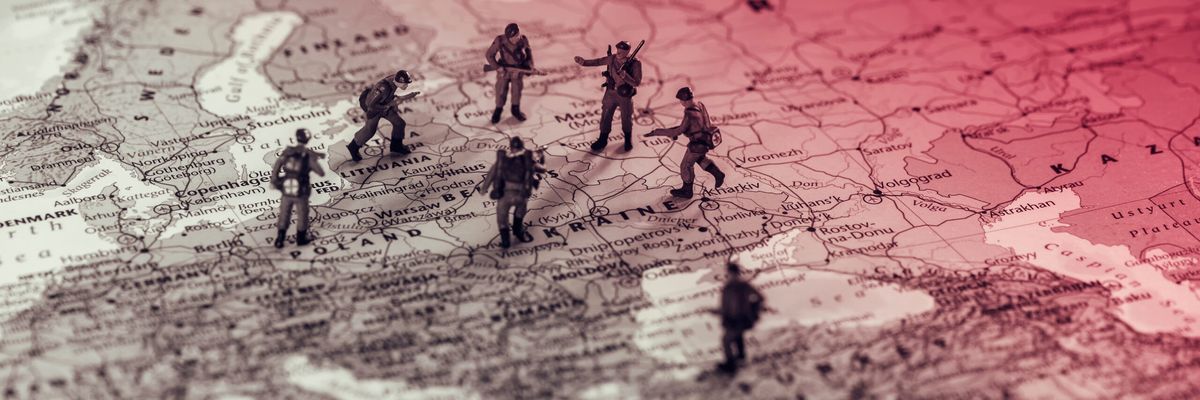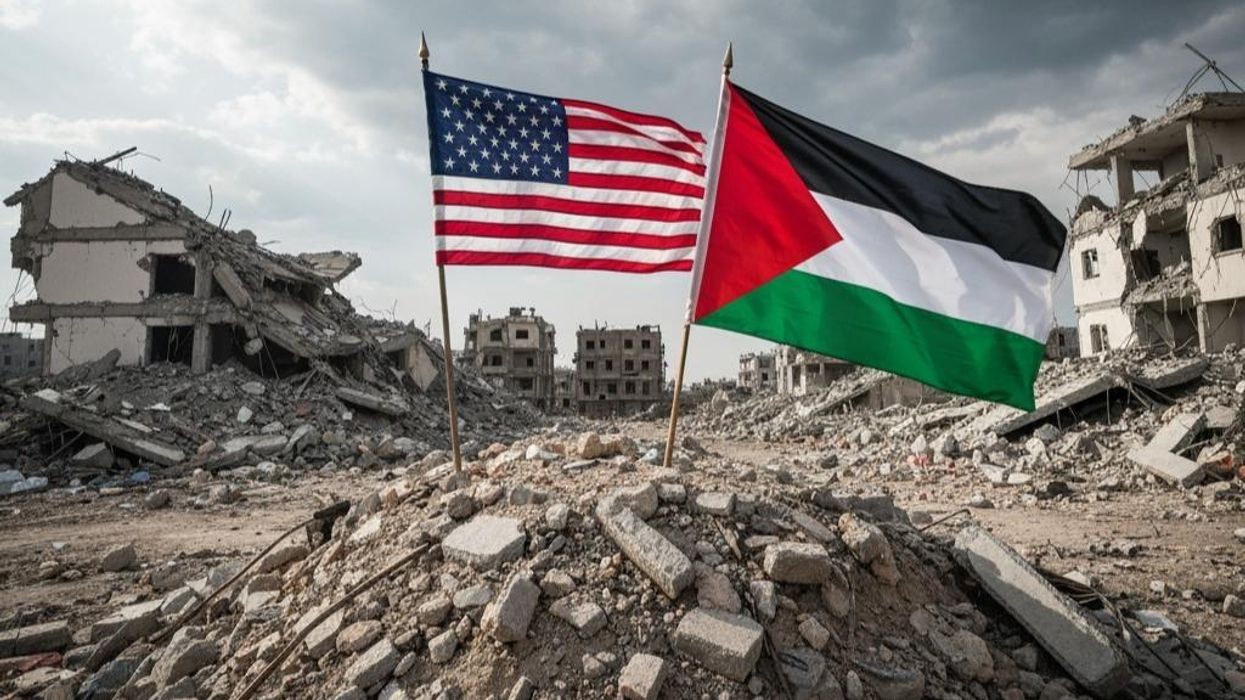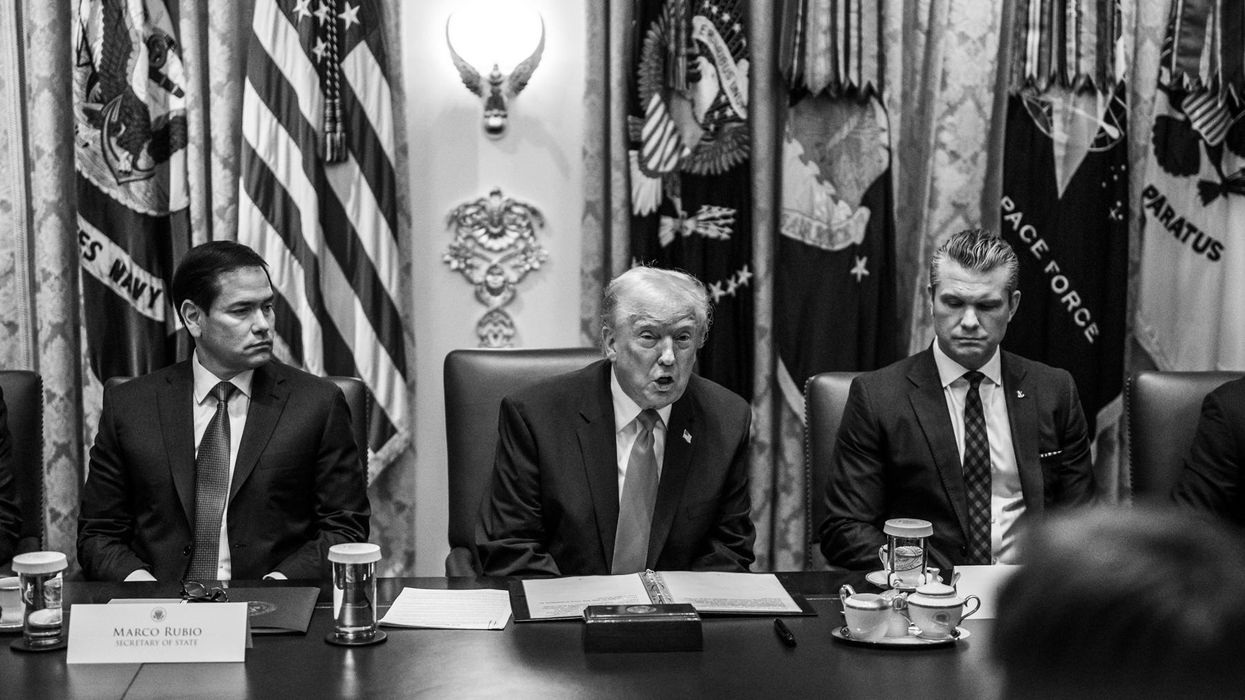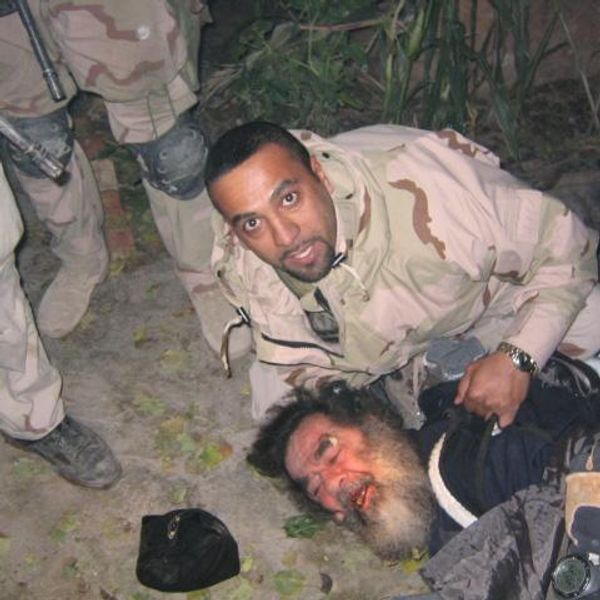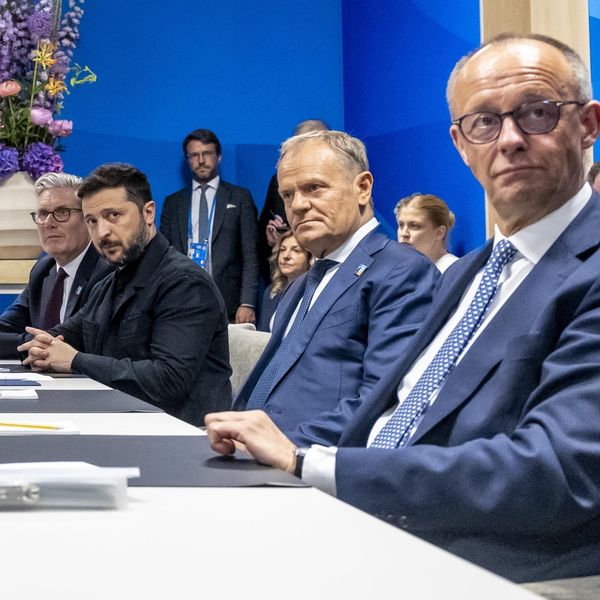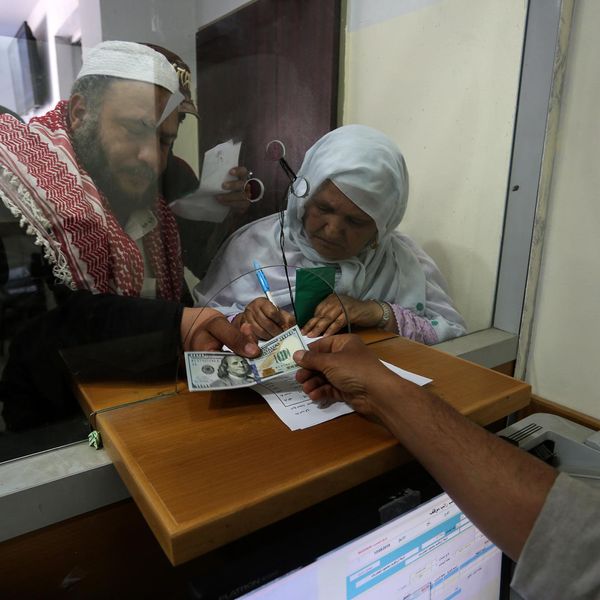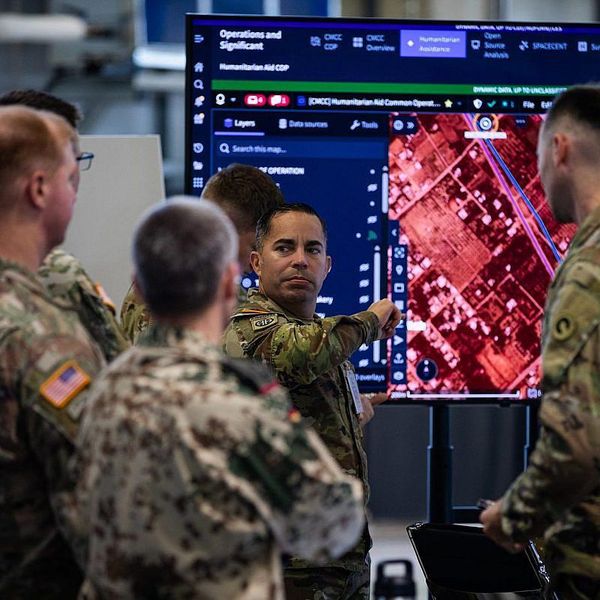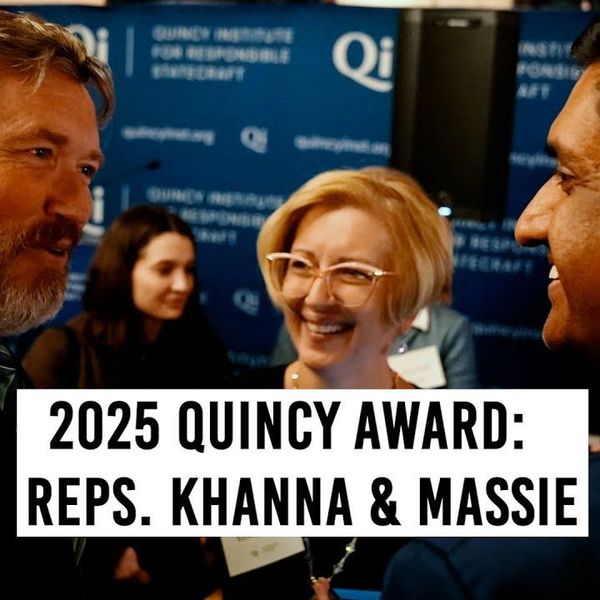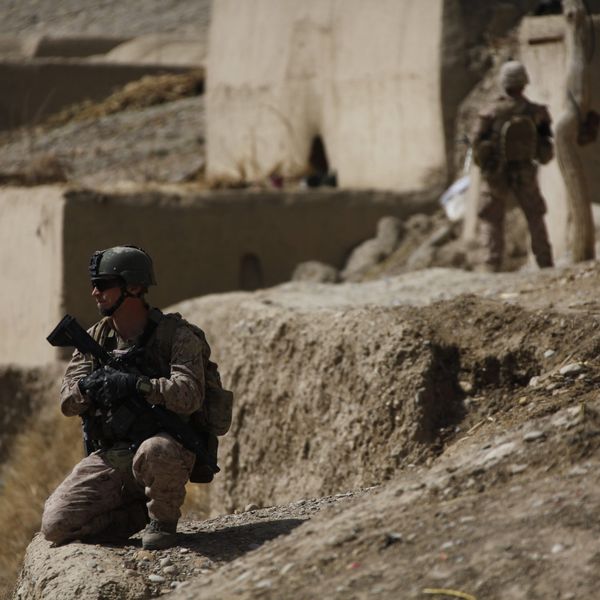The Ukrainian “spring offensive” (which may be a summer event) is likely to be a stalemate with the battle lines slightly moved. Ukraine will not be more secure; Russian neuralgia will not be assuaged; and the risk of conflict will continue.
It is time to start thinking outside the box.
Make no mistake: This war is not about democracy versus authoritarianism or the “rules of the international order" as defined by the United States. It is about insecurity and fear on both sides. The fear of invasion and the need for reassurance is an old one. It’s about sovereignty and the inviolability of borders — the right for people to live in safety, be they Ukrainians, Poles, Balts, or Russians.
Fear runs strong on both sides of this conflict. For Ukraine, Poland and the Baltics, the fear is existential; for Russia, the fear is historical.
Broadly speaking, there are two ways nations might alleviate this fear. One is to “arm up” to deter any potential adversary. The other, especially relevant in the space from Brest to Vladivostok, is to “arm down,” lowering security risks through a reduction in tension and reassurance. Both are “realistic” options — but only the first is being pursued today.
Arming up celebrates the revival of the NATO alliance, the absolute necessity of confronting Russian “imperialism,” the continuous flow of military equipment to Ukraine, the solid performance (so far) of the Ukrainian military, expanded European and U.S. military presence in the “front line” states from the Baltics to the Black Sea, adding Finland and Sweden to the alliance, maybe deploying missile defenses forward, and putting NATO (U.S.) tactical nuclear forces on alert, perhaps moving them forward.
None of this is reassuring. The Baltic republics and Poland will continue to fear they are a pathway for Russian invasion. The Americans will still want to be deployed forward in greater numbers. German military strength will grow. And the Russians are likely to withdraw even more into an irredentist surliness and wounded pride, anticipating the next move that reassures them not at all.
This outcome looks inevitable right now. If the problem is Russian imperialism, arming up seems to be the answer. But if the problem is Eurasian security, as I believe it is, arming up is a counter-productive answer. Long-term security in Eurasia will need an institutional design and policy steps that ensure that the people of the front-line states on both sides feel safer. And it will need to reassure the U.S. and China that confrontation in Europe is no longer a threat to global stability.
Defining such a security regime will take vision, imagination and sophisticated statecraft. The kind of wisdom Paul-Henri Spaak, Robert Schumann and Konrad Adenauer showed in 1952 when they proposed a European Coal and Steel Community binding the industries that were at the heart of war-making in the 1930s. The ECSC led directly to the creation of the six-nation European Economic Community, the precursor of the 27-nation European Union, creating a zone of peace throughout western Europe.
It is the statecraft and imagination that led Richard Nixon and Henry Kissinger in the 1970s to imagine nuclear arms limitations between the U.S.S.R. and the U.S. and to recognize that China and Russia were not joined at the hip internationally. It is the statecraft George H.W. Bush and James Baker used to navigate the end of the Warsaw Pact and a united Germany, as the Berlin Wall fell.
The goal of statecraft needs to be security for everyone in the Eurasian region. The Russians need to feel as secure as the NATO members do. In addition, the major powers — the U.S. and China — need to be part of such a regime or its guarantors.
Here are several suggestions to stimulate discussion:
1.) First and foremost, all interested parties need to be included in the regime so all security needs are met. Most important, Russia needs to be an integral member, shaping and participating in the design. This was not done in the 1990s (yes, I was part of the administration that failed to do it). Instead, Russia was marginalized as NATO expanded. (This will be difficult — probably impossible — as long as Vladimir Putin is in power).
2.) Including everyone means the regime should eventually replace NATO, not make NATO its heart. Otherwise, including Russia is a non-starter.
3.) This might mean putting the European Union at the heart of the regime — a European solution, not an American one. This would be a major challenge for the EU, which has devoted only marginal attention to military capabilities and security strategies for Eurasia. NATO has been Europe’s default.
4.) It means taking Macron seriously when he (like other French presidents before him) calls for “strategic autonomy” for Europe. Europe will need and want independence of action; indeed the caution of France and Germany about confrontation with Russia reflects that reality.
Autonomy will mean creating a more comprehensive European military capability, one that can work in tandem with the U.S. and others, but also on its own. That would make a significant U.S. military withdrawal from Europe possible, a step that would reassure Russia, too. A European capability would have to reflect the larger security regime being created. The reassurance such an agreement brings could make Europe’s military investment less costly.
5.) Arms control and arms reductions would be a central feature of such an arrangement. Exactly the kind of measures that both sides have cast aside over the past 25 years and exactly the tools that provide reassurance and security: confidence-building measures, observation and verification of military activities, exchanges of military data, communications hot lines, demilitarized zones, limits on each other’s forces, agreements restraining new technologies and capabilities (hypersonic missiles, artificial intelligence, cyber offenses, among others), among many other measures.
Arms control agreements will need to include nuclear weapons — strategic and tactical — and missile defenses. This means a revival of global nuclear arms negotiations, including the U.S. and China, and specifically revived agreements on the deployment of tactical nuclear weapons and missile defenses in the European region. It must include a serious discussion of the role of French (and British) nuclear capabilities.
7.) New institutions will be needed. This is a moment for institutional innovation, as was the moment that led to the UN, the EU, NATO, and the Shanghai Cooperation Organization. Could the Organization for Security and Cooperation in Europe (OSCE) be redefined to play a central role, since it has a security mission and all European players belong? What changes would have to be made for it to play a serious role?
8.) The U.S. and China would both need to be central partners in shaping this regime. Would they be members? Guarantors? Answering this question could ensure that the U.S. plays a role but is less centrally involved with the decisions. This would mollify those in Washington who want the Europeans to carry more of the burden.
It would also recognize China’s growing role in security issues globally. This is about Eurasian security, remember. China is key to reassuring Russia about such a new regime. It could also provide a vehicle for restoring U.S.-China cooperation in at least one arena, lowering global tensions. (A U.S.-China confrontation could blow the whole idea up.)
Current policy points away from security and toward long-term confrontation. Europe is likely to fall short in the arming up department, which means the U.S. will carry the load until support in Washington flags. Russia, specifically Putin, is not ready for this discussion and is unlikely to be until the Ukraine stalemate is clear.
Downstream, such a solution may be the only way to reassure a post-Putin Russia that security can be had in a less costly and less confrontational way.
Lest this proposal be thought “idealistic;” it is actually realistic. If security is the goal, a Eurasian security arrangement — “arming down” — is a more realistic way of providing long-term security.
This article was adapted from “The Ukraine War and Eurasian Security” (Parts 1&2) at Sheathed Sword.

